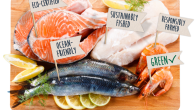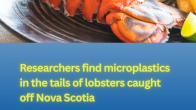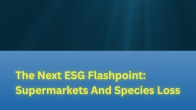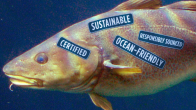How we fish matters
Our oceans’ inhabitants are in trouble. 75 percent of the world’s fisheries are either fully exploited, over-exploited or have collapsed. Worldwide fishing capacity is 2.5 times larger than what the oceans are able to sustainably produce. It’s time for humans to change the way we use the ocean’s once bountiful resources, because there are no longer plenty of fish in the sea.
The Issues:
Fishing Gear
The type of gear used by fishermen can substantially affect the bycatch rates and habitat impact of any fishery. Getting the facts on the different gear types can improve your understanding of sustainable fisheries and help you to make the right consumer choices for healthy oceans.
Want to learn more? Watch this short video to learn more about the commonly used types of gear in Canada, and their ecological impacts. Or check out our in-depth report, How We Fish Matters: A report on the ecological impacts of Canadian fishing gear. This report provides a detailed look at Canadian fishing gears, and their ecological impact.
Overfishing
Overfishing is one of the greatest threats to our oceans today. We are simply catching fish faster than they can reproduce. Advances in technology have lead to an industrialized fishing industry that has the ability to wipe out entire populations of fish. It is the large, predator fish such as cod, salmon, tuna and sharks that are the most commercially valuable. Unfortunately, they are also the most vulnerable to fishing pressure; 90 percent of these large species are already gone.
It is not only the target species that is affected by overfishing. Removing a top predator from an ecosystem can have catastrophic impacts on countless species that all interconnected via the marine food chain.
Habitat Damage
There are many types of fishing gear that cause unnecessary damage to marine habitat. Seafloor ecosystems include kelp forests and coldwater reefs, which provide shelter, food and a nursery for countless marine species. These habitats, which often take thousands of years to develop, can be destroyed in seconds by unsustainable fishing practices such as bottom trawling and dredging.
Bycatch
Not everything that was caught with your seafood dinner ends up on your plate. Bycatch is the accidental capture of marine creatures in fishing gear intended for another species. Approximately 25 percent of the world’s catch is bycatch - that is around 30 million tons thrown back every year! Bycatch can include overfished species, undersized fish and marine mammals, turtles and seabirds.
Management
The way a particular fishery is managed can have an enormous impact on its sustainability. Management refers to the regulations and enforcement in place to protect a fishery from overexploitation. Proper management requires rigorous scientific assessment, the creation of meaningful regulations and incentives to prevent unsustainable practices, and proper enforcement to ensure compliance. Improper management of fisheries can lead to ‘Illegal, unregulated and unreported fishing (IUU)’, a practice that some attribute to the steep population declines of many endangered species.
The following are brief summaries of some of the major fishing gears used in Canada’s waters:
Bottom Trawls
Bottom trawls consist of weighted nets that are designed to be dragged along the seafloor. The net may be held open by a pair of heavy metal doors (otter trawling) or by a beam (beam trawling). Commonly trawled species include flounder and sole, rockfish, cod, lingcod, pollock and shrimp. Bottom trawling can cause severe disruption of marine life and habitat on the seafloor. For example, it is thought that 50 percent of the glass sponge reefs in B.C. may already have been destroyed by bottom trawling when they were discovered in the 1980s. Bottom trawlers can catch significant numbers of unwanted species. In a recent report, we found that 20 percent of the B.C. bottom trawl fishery’s catch was "unwanted bycatch".
Bottom Longlines
Bottom longlines consist of a single mainline hung with hundreds of shorter lines with baited hooks. Longlines are anchored to the ocean floor. Bottom longlines are used to target larger, bottom-dwelling fish species such as halibut, Atlantic cod and haddock. Longlines can have high bycatch rates (the Pacific halibut fishery has a 27 percent bycatch rate, for example) and sometimes hook endangered sea birds. Bottom longlines are stationary on the seafloor, and therefore are not regarded to be as damaging to habitat as fishing gears that move along the bottom. However, there can still be serious concerns about the impact of bottom longlines on habitat, especially when they are set in corals or sponge areas.
Pelagic Longlines
Pelagic longlines consist of a long mainline from which smaller lines hang, each with a baited hook. The line is suspended in the water column by a series of floats. In Canada, pelagic longlines are used only in the Atlantic, where they are used to catch tuna and swordfish. While pelagic longlines have little to no impact on ocean habitat, they can have extremely high bycatch rates – up to approximately half of their total catch may be unwanted. In Atlantic Canada, the discarded species include leatherback and loggerhead turtles, juvenile swordfish, and various shark species including blue sharks. Although some of these animals are still alive when discarded, many are either seriously injured or dead.
Purse Seines
A purse seine uses large sections of netting to encircle a school of fish. The bottom of the net is then closed up with a purse-like drawstring, trapping the fish. Purse seines are set in the water, usually close to the surface, in a circle using a small boat called a skiff. It is an effective and often very fuel-efficient way to catch schooling fish, such as herring, sardines and some salmon. Purse seines have very little impact on habitat and their bycatch rates depend on the fishery with fisheries such as herring, sardines and salmon having typically low bycatch rates, but tropical tuna purse seines fisheries (e.g. canned tuna) are often associated with high bycatch of turtles, sharks and undersized tuna.
Gillnets
Gillnets consist of large nets that hang vertically in the water column. Gillnets are used at several different depths, depending on the target species. In Canada, bottom gillnets are used in the Atlantic and the Arctic, but not in the Pacific. Mid-water gillnets that are suspended above the seafloor are used in the Atlantic and the Pacific. The holes of these nets are deliberately sized so that a fish’s gills get stuck when they attempt to swim through. They are commonly used to catch species such as salmon and cod. Bycatch of marine mammals and seabirds, and habitat impacts, are concerns for bottom gillnets. There are no known habitat concerns for mid-water gillnets, but they do catch seabirds and marine mammals.
Dredging
Dredging is commonly used in the Atlantic to catch shellfish, such as clams and scallops. Scallop dredges are metal baskets that are dragged along the seafloor to scoop up scallops. A clam dredge uses a hydraulic jet to liquefy the sediment and then catches any solid objects in its path. Bycatch for this type of fishery is high, and includes groundfish and other marine invertebrates. Dredging also has significant long term effects on seafloor habitat and ecology.
Pots and Traps
A number of different retrievable pots and traps are used in Canada. This type of gear is left on the seafloor to trap animals that are hauled up later. Pots and traps can cause some habitat damage depending on the size and type of trap/pot, the habitat on which they are placed, and the density of traps/pots set. Traps set for fish are often larger and heavier than invertebrate traps and have the potential to cause more damage to the seafloor. Bycatch in pots and traps varies widely and depends on the target species and size of the trap, though often bycatch consists of undersized individuals of the target species.
Trolling/Hook and Line
Trolling, not to be confused with trawling, is the use of a single or few baited hooks on the end of a fishing line. The lines are often dragged through the water, but it can also be done from a stationary position. Several different types of fish can be caught this way, including salmon and tuna. This type of fishing gear is considered relatively benign in terms of habitat damage, and has a low bycatch rate.






